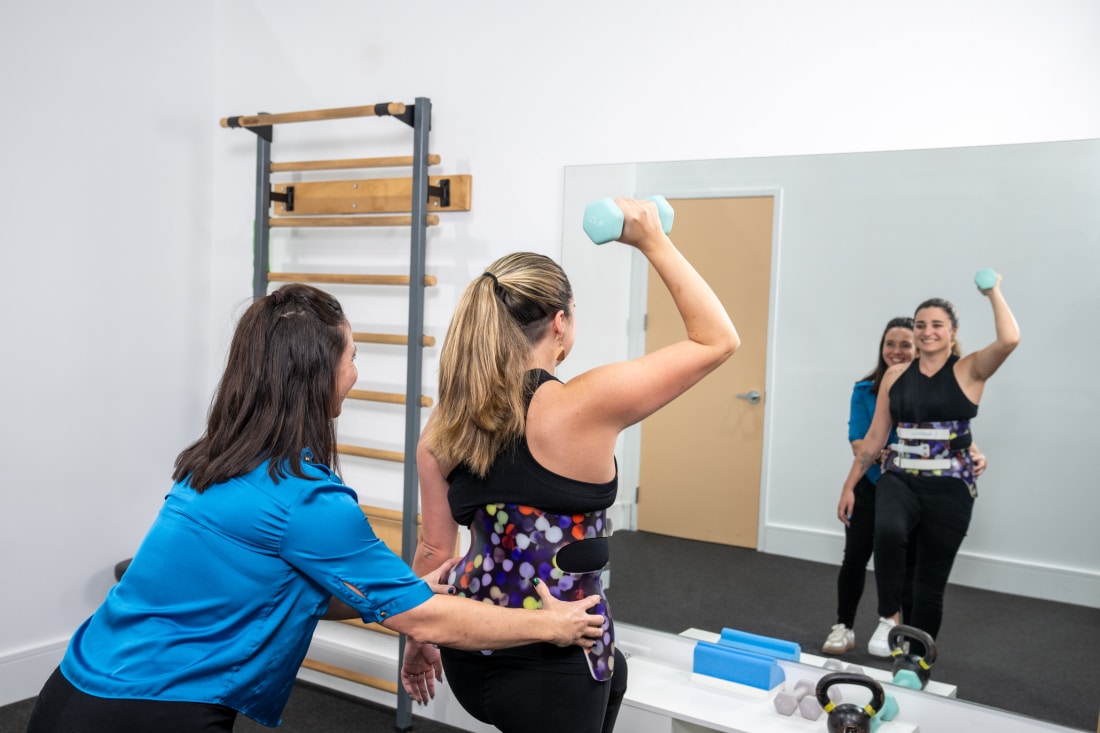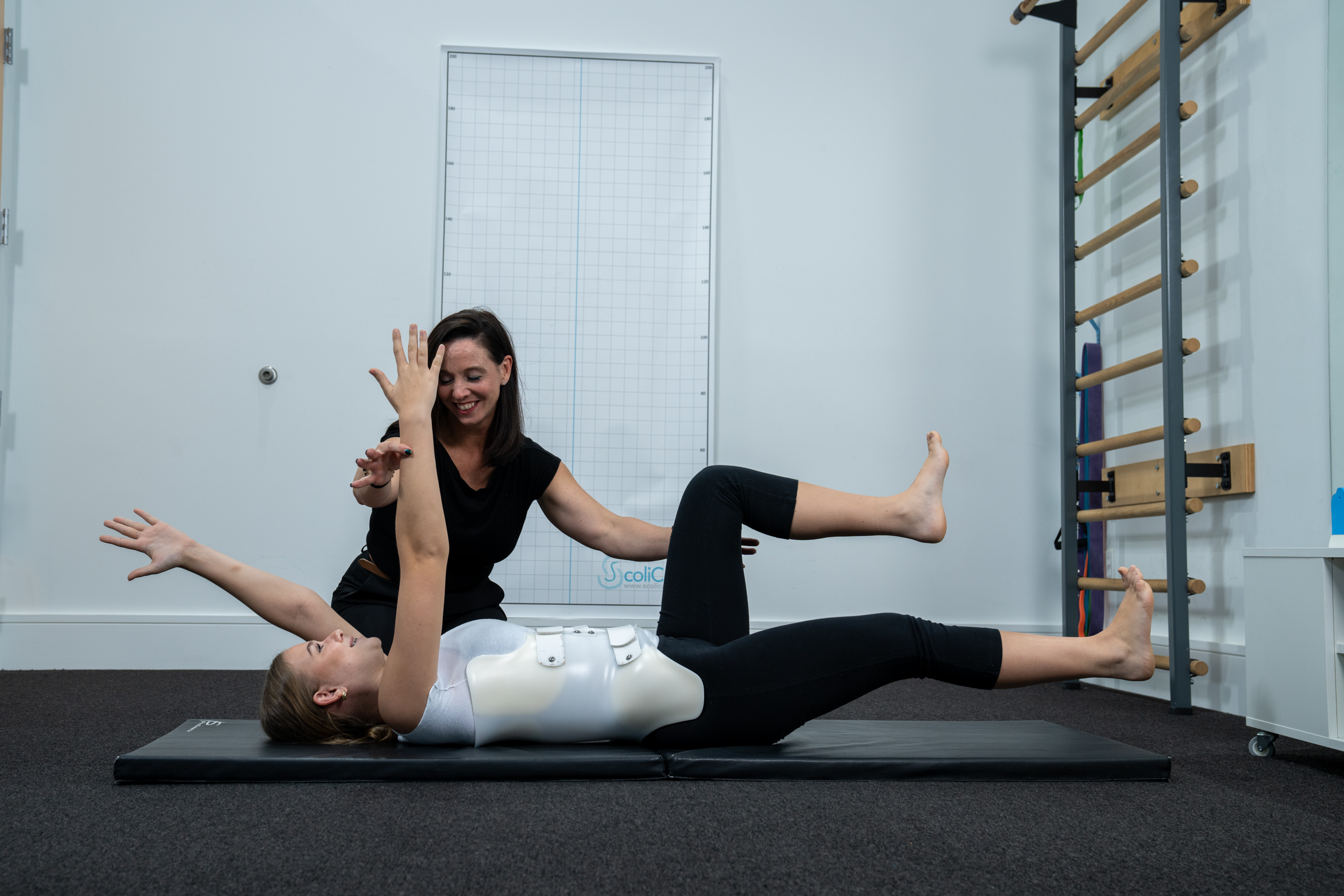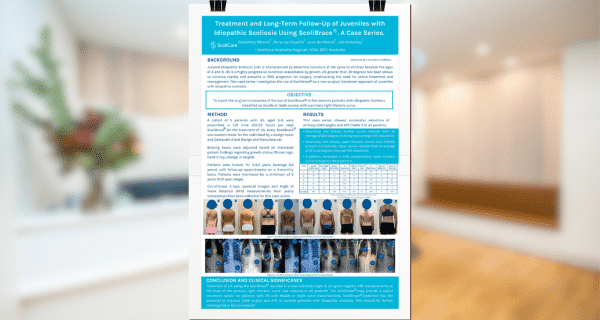When it comes to managing scoliosis, a condition marked by an abnormal spinal curve, a one-dimensional approach often falls short. ScoliBalance® and ScoliBrace®, represent a powerful synergy of structural and functional interventions, combining a custom 3D brace with a tailored exercise program. This dual strategy addresses both the physical alignment of the spine and the body’s functional movement, offering a comprehensive solution that outperforms standalone treatments. Here’s how these two elements work together—and why that matters for patients and clinicians alike.
The Synergy of Structure and Function
ScoliBrace® is a rigid, over-corrective thoraco-lumbar-sacral orthosis (TLSO) designed using advanced 3D scanning and CAD technology to fit each patient’s unique curve (1). Its purpose is to guide the spine toward a straighter alignment, applying targeted pressure to halt progression and, in some cases, reduce curvature. ScoliBalance®, a physiotherapeutic scoliosis-specific exercise (PSSE) program, complements this by teaching patients to actively self-correct their posture (ScoliCorrection) and perform specific exercises (ScoliExercises) to strengthen supporting muscles (1). Together, the brace provides a structural foundation, while the ScoliBalance® program enhances functional stability and flexibility, creating a dynamic partnership that tackles scoliosis from multiple angles.
This synergy is critical because scoliosis isn’t just a structural issue—it involves muscle imbalances, poor posture positions, and reduced endurance. The establishment narrative often leans heavily on bracing or surgery, dismissing exercise as secondary. Yet, evidence suggests that combining bracing with targeted movement can improve outcomes beyond what either achieves alone (2). The brace guides the spine from the outside, while ScoliBalance builds the muscular support and mind-body connection needed to maintain those corrections over time, reducing reliance on the device and fostering long-term resilience.
‘Together, the brace provides a structural foundation, while the ScoliBalance® program enhances functional stability and flexibility, creating a dynamic partnership that tackles scoliosis from multiple angles.’

Figure 1: ScoliBalance® and ScoliBrace® combined is often the best strategy to optimize outcomes for patients with scoliosis or hyperkyphosis.
Why This Matters
This combined approach matters because it challenges the outdated “watch and wait” philosophy, which risks progression during growth spurts. By addressing both structure and function, ScoliBalance® and ScoliBrace® offer a proactive, non-surgical path that aligns with patient-centered care and can lead to increased trunk muscle endurance (1).
The synergy of ScoliBrace® and ScoliBalance® isn’t just about managing scoliosis—it’s about transforming how we approach it. For clinicians and patients willing to embrace this integrated strategy, the results speak for themselves.
To integrate ScoliBalance® into your clinic, register for our upcoming ScoliBalance® level 1 course in Alameda, California on the 22nd-24th August, 2025.*
*Only available for ScoliBrace Providers
References:
- Marchese R, Du Plessis J, Pooke T, McAviney J. The Improvement of Trunk Muscle Endurance in Adolescents with Idiopathic Scoliosis Treated with ScoliBrace® and the ScoliBalance® Exercise Approach. J Clin Med. 2024 Jan 23;13(3):653. doi: 10.3390/jcm13030653. PMID: 38337346; PMCID: PMC10856658.
- Negrini, S., Donzelli, S., Aulisa, A.G. et al. 2016 SOSORT guidelines: orthopaedic and rehabilitation treatment of idiopathic scoliosis during growth. Scoliosis 13, 3 (2018). https://doi.org/10.1186/s13013-017-0145-8



